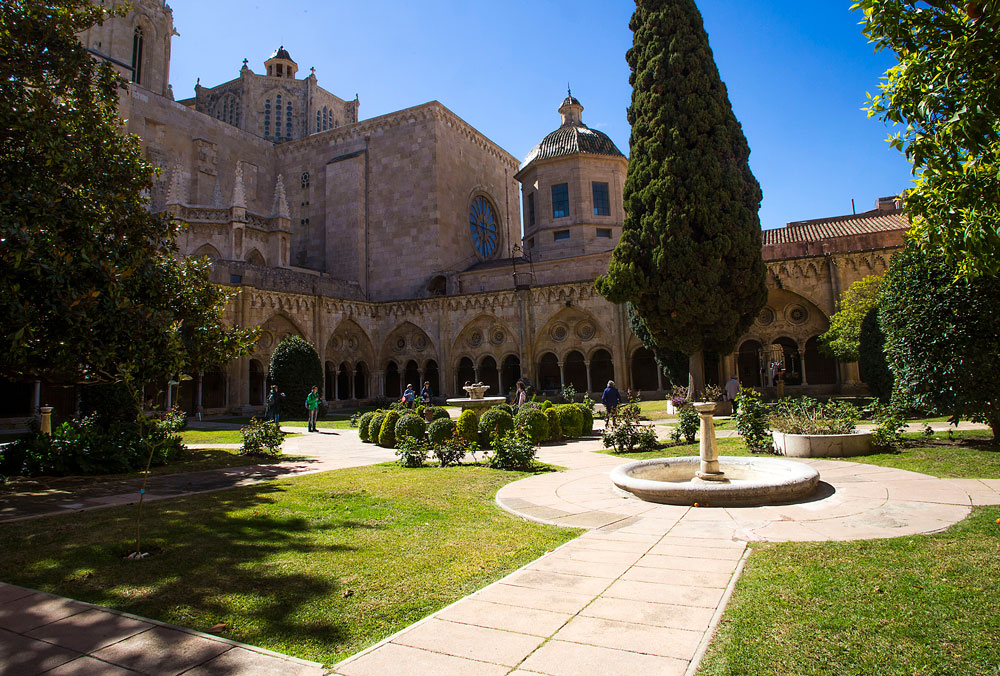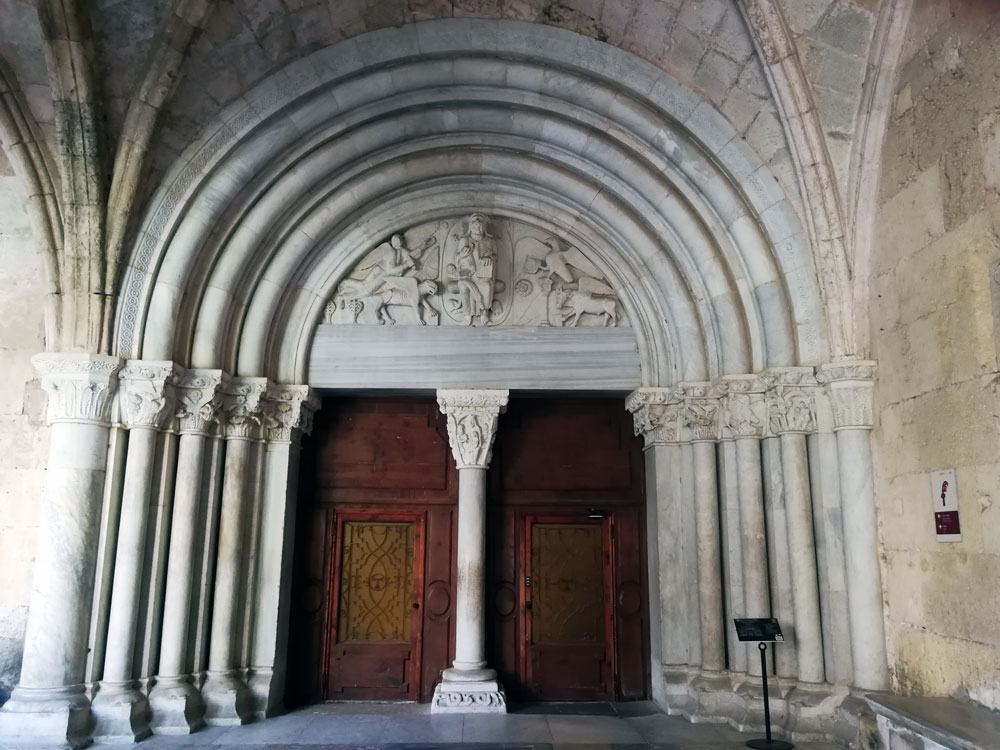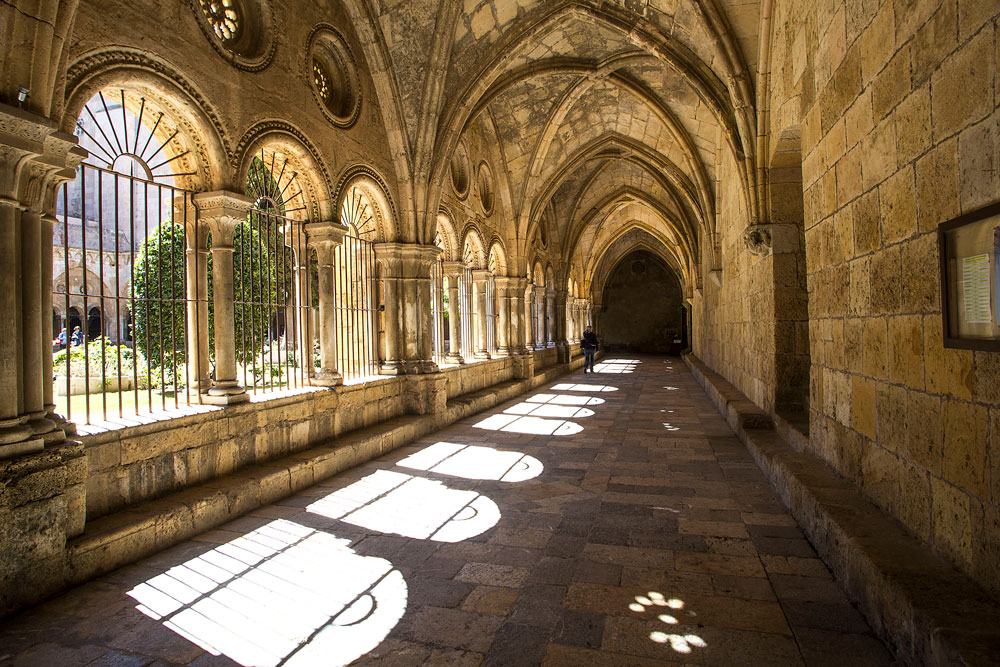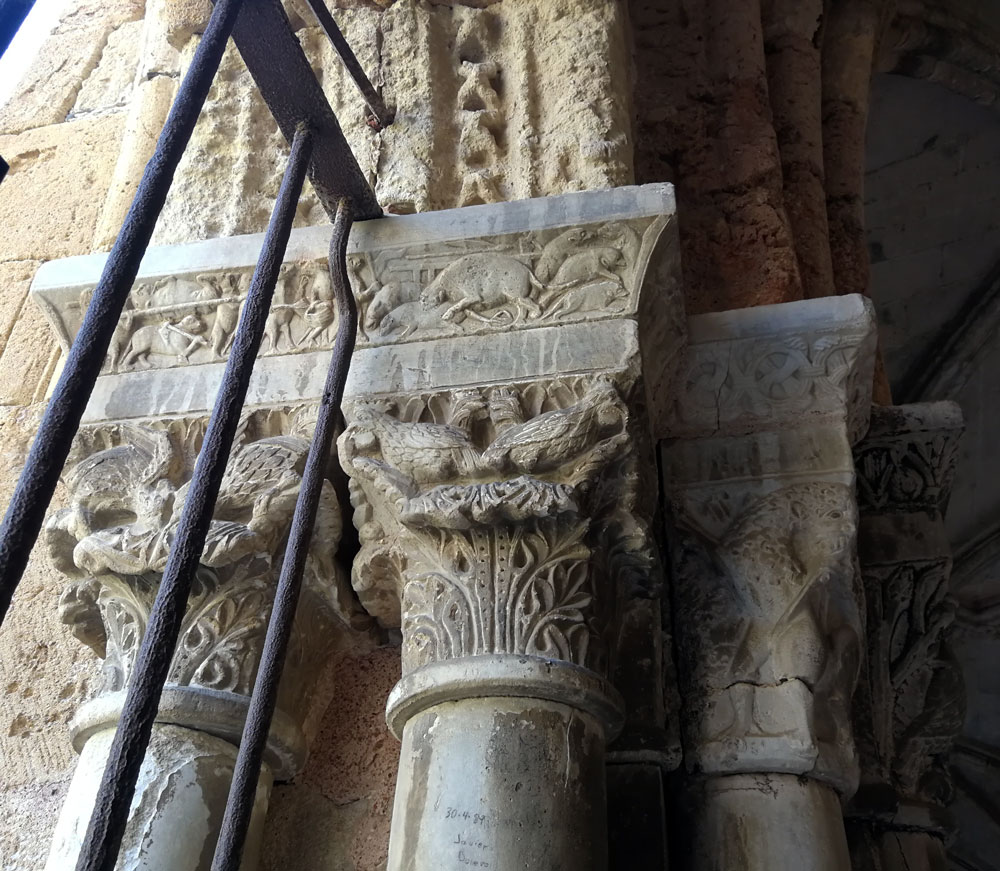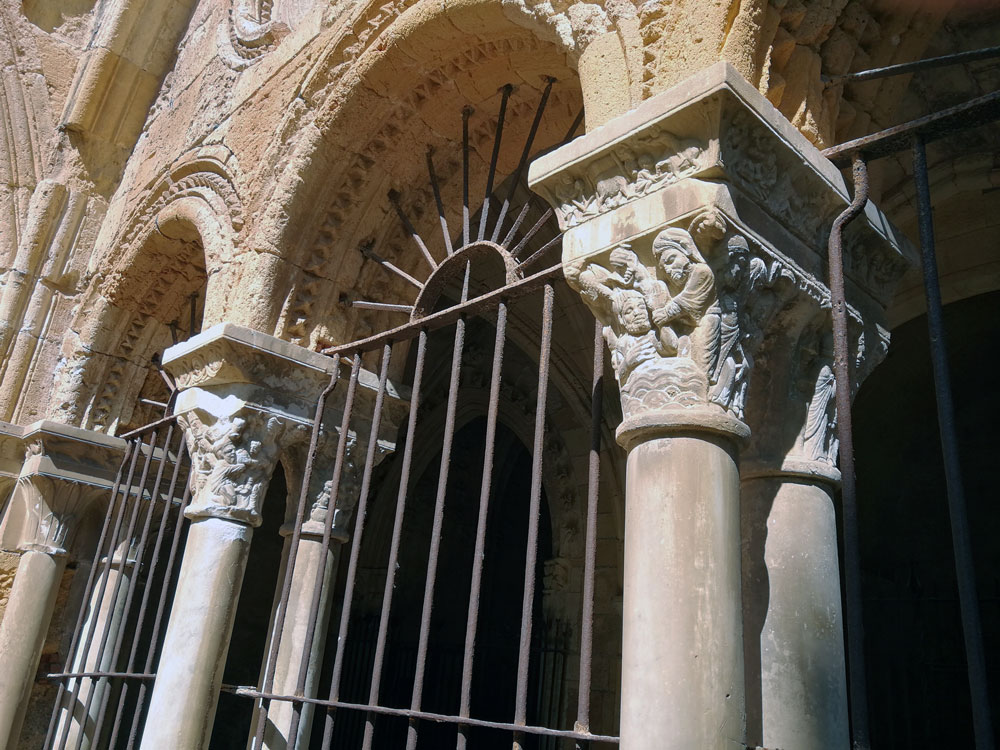The Cathedral cloister of Tarragona is perhaps one of the most beautiful corners of the city, and an essential stop on any route around medieval Tarragona.
Its architecture and decoration also tell stories that will take you back in time, from Roman Tarraco.
Through to the fables and legends of the Tarragonans of the Middle Ages and the leading protagonists of the Old and New Testaments.
This article offers a brief guide to help you make the most of your visit, whether this is the first time you’re discovering the cloister or if you already know it.
To take into account…
Before entering, it’s important that you realise that we present-day visitors are very privileged to be able to enter the area.
Originally, this space built at the side of the Cathedral was conceived purely for canonical use.
In other words, the members of the Cathedral’s management and governing body.
Consequently, hardy anyone outside this domain set foot in the cloister, which makes a visit here even more special.
Let’s start the visit in the cloister
According to the way visits to the Cathedral of Tarragona are currently organized, you enter from inside the Cathedral.
At this point, it is very important not to let yourself be distracted by the view of the garden and the galleries.
But rather turn around to look at the door through which you have entered.
This is one of the most notable features of the whole complex, but due to its position it tends to go unnoticed.
The door to the cloister, which represents the Apocalypse, is made from marble, a material that was very rarely used in other medieval cathedrals.
Nevertheless, marble is very much a feature of the Cathedral of Tarragona, and the reason for this can be found in the city’s Roman history.
The remains of Roman Tarraco provided a considerable supply of marble to the builders of the cathedral.
It took great advantage of it at points such as this one.
The legacy of Tarraco is still very much present in the Cathedral cloister, apart from the door.
Two of the four walls of this space match those of the walls which, in Roman times, surrounded the Roman temple of Augustus (known as temenos).
The cloister is also one of the best places to see the remains of this sacred wall that is over two thousand years old.
You will find it in the Exedra Romana room, whose entrance is in one of the corners.
The cloister of Tarragona Cathedral and its capitals
There is no unanimous agreement about the chronology of the construction of Tarragona’s Cathedral, but dates for the cloister are usually put at between the twelfth and thirteenth centuries.
The work is medieval Romanesque in style, and is particularly notable for its dimensions. With an area of almost 46 x 46 metres, it is considered to be the second-largest Romanesque cloister in the Iberian Peninsula.
Walking around the galleries that surround the garden, you will find a total of 295 capitals, all decorated with carefully-rendered sculptural features.
You should be able to distinguish four different themes.
The most prolific theme is based on vegetation, but you will also be able to find other capitals featuring fantastical creatures and monsters, something very typical of the medieval imagination and very commonly found in these kinds of structures.
A third very popular type of capitals are those that depict popular fables, a theme in which you will find what is probably one of the most famous capitals from inside: the capital of the rats.
This relief, which you can see to the side of the entrance door to the garden, explains the history of a very intelligent cat which helped a noble family of Tarragona to get rid of a plague of rats.
To do so, the cat pretended to be dead, and when the rats got ready to bury it, it pounced on them all and ate them.
Capitals and a story of redemption
However, historians’ interest tends to concentrate on the so-called narrative capitals: those that refer to stories from the Old and New Testaments as well as stories about the Saints and the Virgin Mary.
There are 28 capitals of this kind in the cloister of Tarragona, situated at very precise positions.
You will find them to the side of the door going into the inner garden, on the wall opposite this door, and at the corner of the Exedra Romana room.
This distribution was not a random one.
The idea was that people walking around there would make a sequential reading of the stories while moving from room to room, with the aim of transmitting a very clear message: that of redemption.
This becomes clear, for example, if we look at the way the stories of the Old and New Testament are arranged.
Biblical Capitals
Thus to the side of the garden door you will find the story of the Original Sin of Adam and Eve; while the opposite wall shows the death of Jesus, which in Christian eyes represents the redemption of this sin.
There, you will find stories from the Old Testament, such as the Sacrifice of Isaac, and also from the New Testament, such as the Doubt of St Thomas.
One of the most unusual portrayals is that of St Nicholas, who you will see as the protagonist of several scenes.
Tarragona is the only example of Catalan Romanesque in which this saint appears, something that has been associated with the Normans.
They took part in the Conquest of Tarragona against the Muslims and felt a particular veneration for St Nicolas.
The cloister of Tarragona Cathedral thus offers a wealth of stories for discovery, which will surprise you at every turn and help you to even better imagine its original atmosphere during medieval times.
By clicking on this link you will find all the information you need to prepare your visit.


